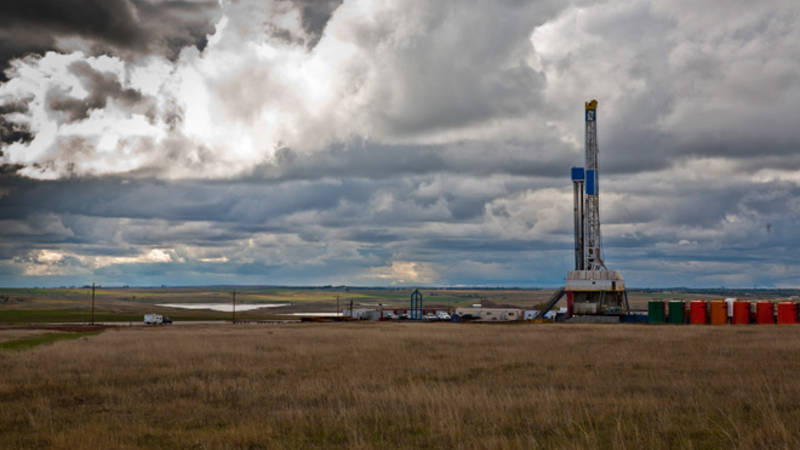Executive order ignores science and public opinion to outline a devastating future for people and parks
President Donald Trump’s new executive order on energy independence ignores one of the worst threats facing our nation and puts Americans, our communities and our beloved public lands in jeopardy.

We Can’t Afford to Wait
Climate change is having real, wide-ranging effects now on national parks around the country.
See more ›The sweeping executive order, released today, aims to reverse decades of work that protects people and the environment, including our national parks, from the perils of climate change. Masked as a directive to reduce dependence on energy from other countries, this order directs the Environmental Protection Agency (EPA) and other agencies to rewrite or eliminate critical safeguards for our air, water and climate. Under this new order:
- The Department of the Interior must review and may repeal safety and enforcement standards, known as “9B rules,” that protect more than 40 national parks from the impacts of oil and gas drilling inside their boundaries, including Everglades, Grand Teton and Mesa Verde.
- The EPA must withdraw and rewrite rules that mandate power plants limit carbon dioxide
- The attorney general must stop defending certain measures that would reduce coal plant pollution
- Various agencies may no longer consider the effects of climate change when deciding whether to issue permits for fossil fuel production
- The EPA and Bureau of Land Management (BLM) must put on hold standards for reducing methane pollution from oil and gas operations
The consequences of the executive order are real for our national parks. Already, climate change is dramatically affecting the places Americans cherish, rapidly melting the glaciers at Glacier National Park, driving Joshua trees out of Joshua Tree National Park, and causing sea-level rise that threatens coastal national parks from Acadia to the Everglades. By reversing sensible policies for reducing climate change, the Trump administration is harming the environment in ways that can affect our communities for generations.
Below is a snapshot of some policies that the executive order will dismantle, and what that means for our national parks.
National Park Service’s 9B Rules

The Facts on Oil and Gas Drilling in National Parks
Why we need the 9B rules that safeguard our national parks
See more ›In a direct attack on national parks, Trump’s executive order requires that the Department of the Interior review rules for oil and gas drilling inside national park units. Known as the National Park Service 9B Rules, these commonsense guidelines establish safety and enforcement standards for oil and gas drilling in more than 40 national parks, including Everglades, Cuyahoga Valley and Mesa Verde. The National Park Service worked for over a decade to finalize balanced rules to protect national park air, water, wildlife and park visitors from energy exploration to access privately owned oil, gas and minerals underground. President Trump’s ordered review and possible repeal of these guidelines presents a clear threat to the National Park Service’s mandate to leave parks “unimpaired for the enjoyment of future generations.”
EPA’s Clean Power Plan
Power plants are the main source of carbon dioxide and other emissions that harm the health of national parks and their visitors. The Clean Power Plan is a critical step forward in the U.S. effort to curb carbon dioxide pollution. The EPA adopted the Clean Power Plan after working for years with various stakeholders, including industry representatives, state officials, public health professionals, members of the conservation community and many others. The EPA was especially sensitive to the needs of industries and state governments, and created a blueprint that gives them flexibility to reduce carbon pollution over a prolonged timeline and in the most cost-effective manner. The EPA estimates that the public health and climate benefits of the Clean Power Plan could be worth $34 billion-$54 billion by 2030, and will prevent up to 3,600 premature deaths and 90,000 asthma attacks in children.
Carbon pollution standards for new power plants
In August 2015, the EPA finalized standards to cut carbon dioxide pollution from new, modified or reconstructed power plants. The rule ensures power plants use the best technology to reduce pollution, limit carbon dioxide emissions, and protect public health and our climate. Without these reductions, carbon dioxide pollution will not only continue to harm our urban areas, but national park air, water and wildlife. Parks are not immune to the scale and scope of carbon pollution.
Hydraulic fracturing rules
In 2015, the BLM issued updates to long-outdated rules for oil and gas drilling on federal lands. The updates improve safety standards for hydraulic fracturing wells and ensure contaminated wastewater is appropriately stored. These measures safeguard national parks from contamination by fracking fluids from oil and gas development on adjacent lands. The rules also require drilling companies to disclose when they are using toxic chemicals so local communities and hospitals can be prepared to treat anyone impacted by contaminated water. Strong well integrity and wastewater storage standards are critical for protecting water quality wherever hydraulic fracturing occurs near a park, such as Theodore Roosevelt National Park in North Dakota and Dinosaur National Monument in Utah.
Greenhouse gas guidance
This commonsense guidance document reaffirms the requirement that federal agencies consider the climate change impacts of new federal projects, including harm to invaluable national park resources, before giving their approval. These guidelines do not impose regulatory burdens on industry, but simply provide federal agencies with the tools to consider a variety of cost-effective methods to reduce greenhouse gas emissions. Repealing this guidance only confuses how agencies should address climate impacts on major federal projects. As a result, it puts our nation’s infrastructure at risk without potentially adequate accounting of climate impacts to our bridges, roads, seashores and more — both within and beyond our national parks. The repeal consequently silences the overwhelming science of climate change and the desire by the public for the government to consider and address its effects.
Social cost of carbon
As part of the executive order, the administration will revisit the social cost of carbon. This calculation measures, in dollars, the long-term damage a ton of carbon dioxide emissions causes in a given year. The EPA and other federal agencies use this figure to estimate the economic damages associated with specific projects and their related carbon dioxide emissions. The tool is critical for the public to understand the true benefits and costs of a project. Without a full picture of climate change’s impacts, agencies may put national parks, taxpayer dollars and local communities at risk.
EPA and BLM methane standards for oil and gas
Methane is the primary component of natural gas and can trap 84 times as much heat as carbon dioxide. Reducing this powerful pollutant is critical to the health of our national parks and our climate. The natural gas industry is the largest industrial emitter of methane, which frequently leaks from pipelines and equipment. After decades of these leaks going unaddressed, both the EPA and the BLM adopted standards to help reduce methane leakage from new wells, hoping to directly stem the release of this harmful greenhouse gas. NASA scientists have discovered a methane “hotspot” hovering over the actively drilled Four Corners region, affecting air quality at parks like Mesa Verde National Park and Chaco Culture National Historical Park.
Repeal previous executive orders on climate change
Trump’s executive order repeals a number of previous executive orders designed to help prepare the United States for the impacts of climate change, including floods, rising seas, prolonged heat waves and wildfires. If America is unprepared, the consequences will be even more devastating to our national parks, economy and communities. Iconic parks like Everglades National Park and Cape Hatteras National Seashore are particularly susceptible to rising seas and increasingly violent storms — just some of the effects of climate change already taking place in our parks.
Coal leasing on federal public lands
The order lifts a Department of the Interior moratorium on new coal mining on federal lands. Coal mining is known to threaten water quality, disrupt wildlife habitat and harm sensitive ecosystems, including those in and near national parks. Forty percent of the domestic coal supply is on public lands, and for years mining companies were allowed to take this coal without paying fair market value for the coal or considering its effects on the climate. The moratorium was simply a temporary pause in new coal leases until the program was reviewed and things like market price and climate could be integrated into leasing decisions. The moratorium did not affect existing leases. Bryce Canyon National Park and others near proposed new coal mines may be harmed by lifting this moratorium, allowing the potentially unfettered development of new coal mines without adding appropriate consideration of its effects on park values, climate and park visitors.
Agency review of impediments to domestic energy production
The executive order directs EPA and other agencies to review the policies and practices that could impede the expansion or production of fossil fuel-based energy and report back to the administration. This tasks the agencies responsible for protecting our environment and parks with creating a sweeping account of anything that might restrict or slow down fossil fuel development. The executive order does not give any consideration to the economic, public health and environmental benefits of reducing greenhouse gas pollution or the value of preserving public lands.
Stay On Top of News
Our email newsletter shares the latest on parks.
Trump’s executive action dramatically halts American progress to combat climate change in ways that can wreak havoc on our people and harm our national parks for generations to come. This reckless action ignores public opinion, science and the needs of communities, and may ultimately leave our children and grandchildren with a more volatile and dangerous future.
We have a responsibility to protect each other and our invaluable natural and cultural heritage. This executive order neglects the real effects climate change has on our nation and tosses the responsibility to deal with the consequences onto the shoulders of future generations.
About the author
-
 Mark Wenzler Former Senior Vice President of Conservation Programs
Mark Wenzler Former Senior Vice President of Conservation ProgramsMark oversaw NPCA’s programs focused on protecting and restoring the air, lands, water, and wildlife in our national parks from 2005 to 2021. He is an avid outdoor recreationist who loves to ski, bike, backpack and paddle, especially in our national parks.


